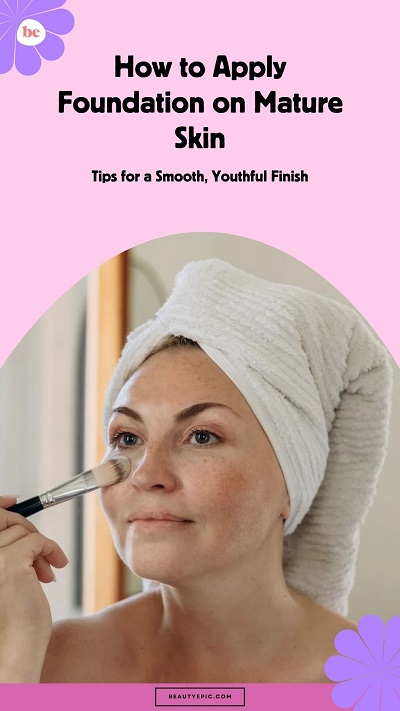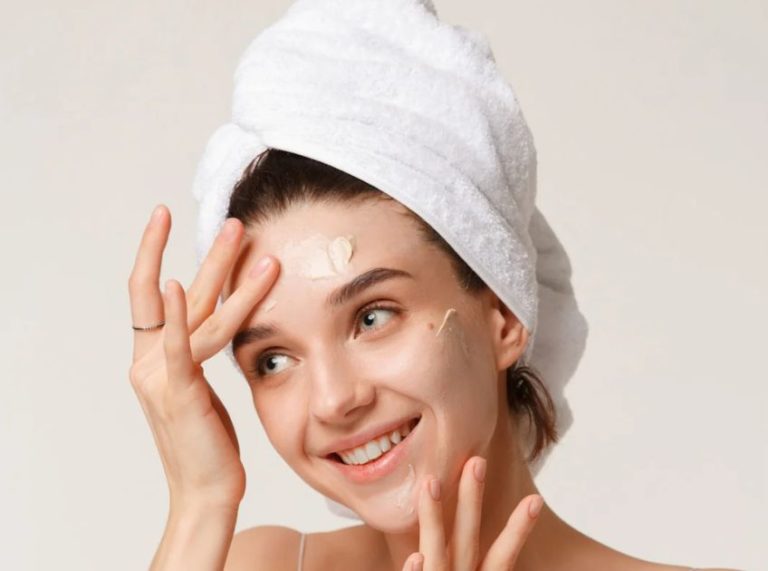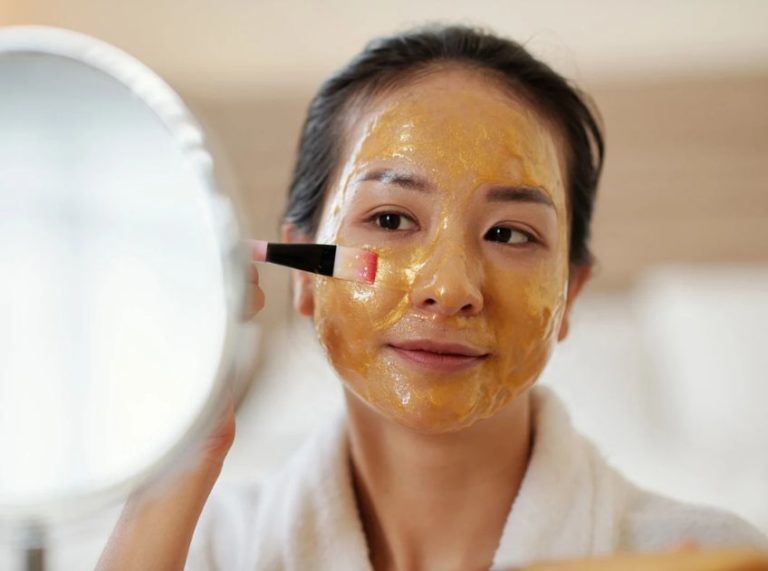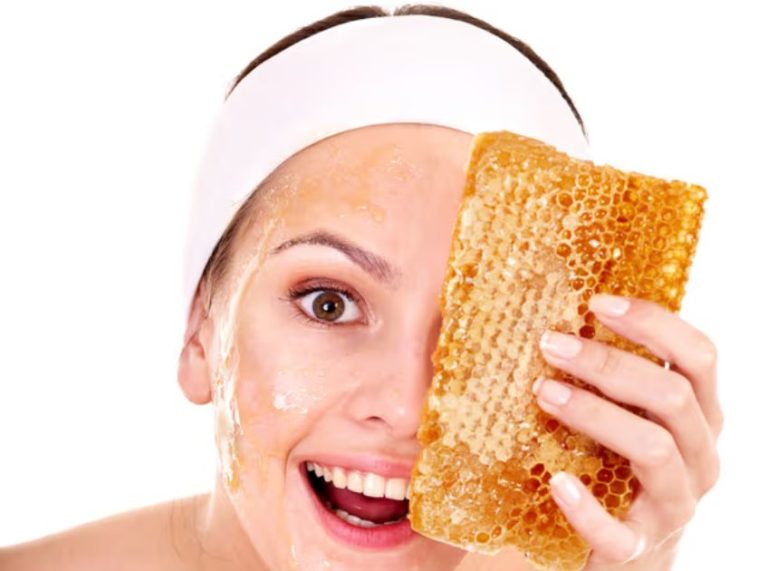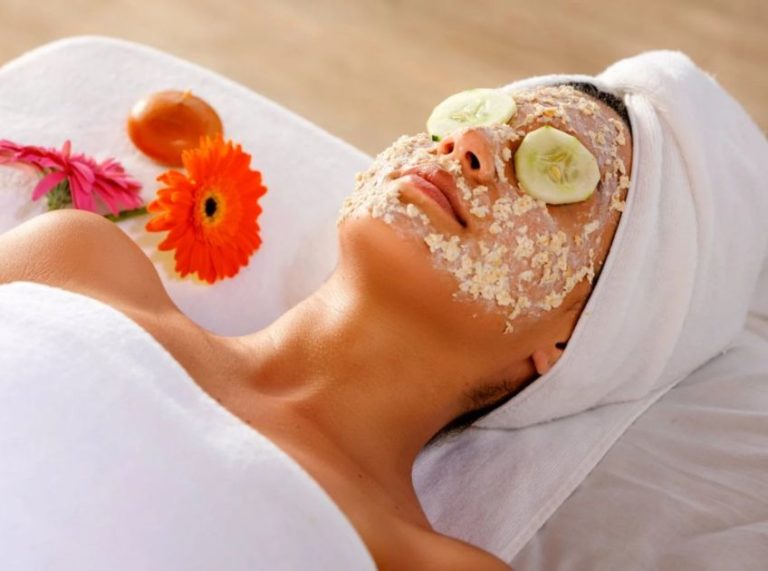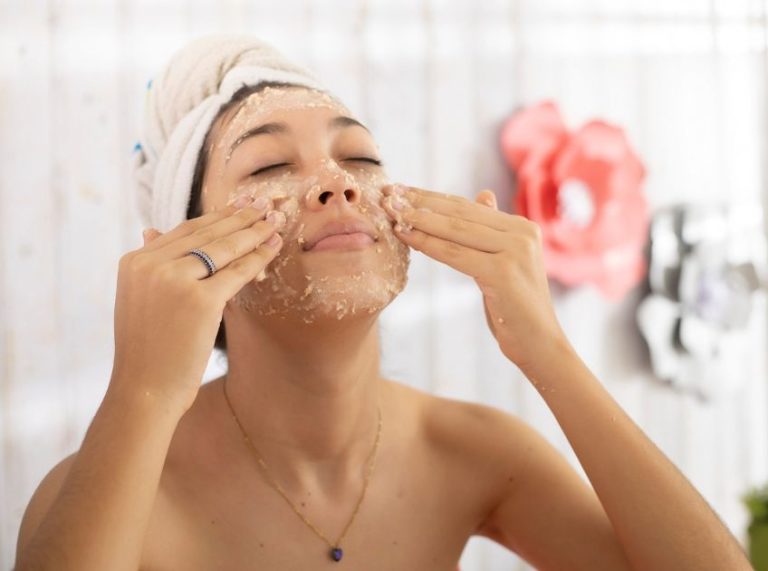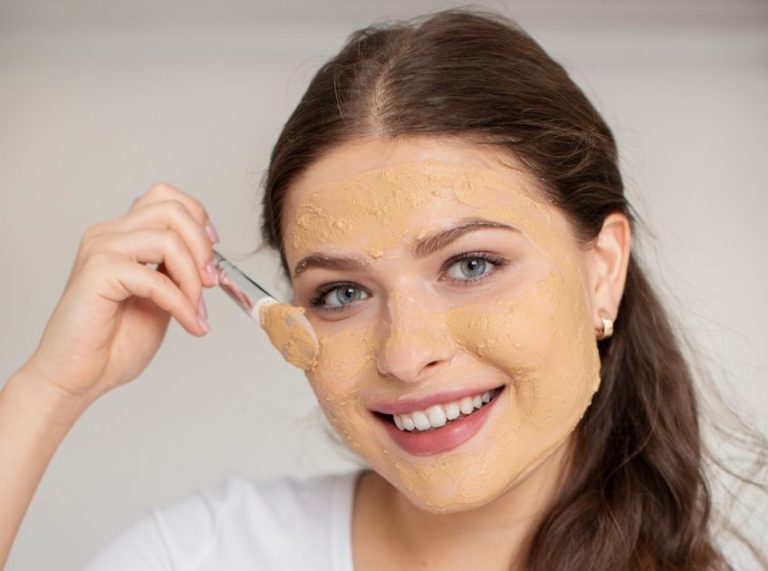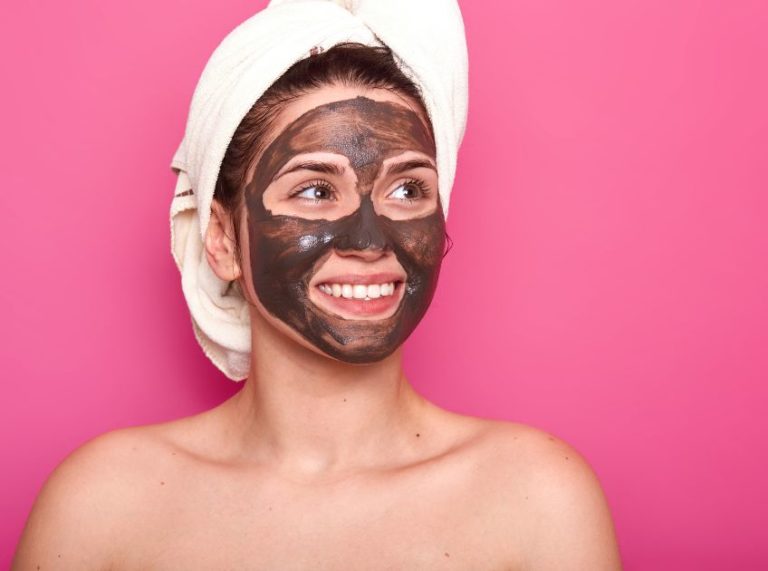
Important: This article is for informational purposes only. Please read our full disclaimer for more details.
Achieving a flawless base on mature skin can be tricky, but not impossible. Foundation should enhance your glow, not highlight fine lines or texture. With the right products and techniques, you can create a smooth, radiant finish that flatters your features at any age. Here’s a complete guide to applying foundation on mature skin for a youthful, natural look.
Article Contains
- Prepping Is Power: Start with Skincare
- Choose the Right Foundation Formula
- Prime with Purpose
- Apply Foundation with the Right Tools and Technique
- Conceal Strategically, Not Excessively
- Set It Lightly: Less Powder, More Glow
- Glow Gracefully: Add Radiance with Cream Products
- Final Touch: Blend Neck and Chest
Prepping Is Power: Start with Skincare
A smooth canvas is key to flawless foundation application, especially on mature skin. Proper skincare helps plump fine lines, improve the soft texture, and improve product adherence.
Steps to prep your skin
- Cleanse gently: Use a hydrating, non-stripping cleanser to avoid dryness.
- Exfoliate lightly: Exfoliate 1–2 times per week with a gentle AHA or enzyme-based exfoliator to remove dead skin cells.
- Hydrate and moisturize: Opt for a lightweight serum with hyaluronic acid and follow with a richer moisturizer to lock in moisture.
- Use eye cream: This helps soften crow’s feet and preps the under-eye for smoother concealer application.
- Don’t skip SPF: Sun protection is essential to prevent further signs of aging.
Pro Tip: Allow your skincare products to fully absorb before applying foundation—this prevents pilling and patchiness.
Choose the Right Foundation Formula
The best foundation for mature skin is one that’s lightweight, hydrating, and buildable. Heavy or matte foundations often settle into fine lines and emphasize dryness.
Look for foundations that offer
- Hydration: Ingredients like hyaluronic acid, glycerin, or squalane help plump the skin.
- Light-to-medium coverage: This allows your natural skin to shine through.
- Dewy or satin finish: These finishes offer a youthful, radiant look.
- Avoid: Full-coverage matte or powder foundations, which can age the skin by settling into lines.
Prime with Purpose
Primers can be game-changers for mature skin—if you choose the right one. Look for a formula that targets specific concerns like dullness or fine lines.
Top primer types for mature skin
- Hydrating primer: Adds moisture and prevents flaking.
- Blurring primer: Softens the appearance of pores and fine lines.
- Illuminating primer: Adds a youthful glow without glitter.
Apply a small amount and focus on areas with noticeable texture or uneven tone.
Apply Foundation with the Right Tools and Technique
The application method makes all the difference in mature skin. The goal is a smooth, skin-like finish, not cakey or heavy.
Best application tips
- Use a damp beauty sponge: This helps sheer out product and press it into the skin for a natural finish.
- Less is more: Start with a small amount and build up only where needed.
- Work in sections: Blend foundation on one part of your face at a time to avoid patchiness.
- Use tapping motions: This avoids dragging the skin and reduces product settling into wrinkles.
Pro Tip: Avoid brushing foundation over areas with fine lines like under the eyes and around the mouth—press it in gently with a sponge instead.
Conceal Strategically, Not Excessively
A creamy concealer is perfect for camouflaging dark circles, redness, or hyperpigmentation without adding texture.
How to apply concealer on mature skin
- Choose a lightweight, hydrating formula.
- Apply in thin layers using a fingertip or a damp sponge.
- Focus on the inner corner of the eyes and blend outward—don’t coat the entire under-eye.
Avoid: Thick, matte concealers, which can crease and exaggerate wrinkles.
Set It Lightly: Less Powder, More Glow
While powder can help set foundation, it must be used sparingly on mature skin to avoid a dry or cakey appearance.
Best setting tips
- Use a translucent, finely-milled powder only where needed (T-zone or under eyes).
- Apply with a small, fluffy brush, not a puff or sponge.
- Consider a setting spray instead—it locks in your look and adds a natural finish.
Pro Tip: Avoid baking or heavy powdering techniques—they don’t flatter mature skin.
Glow Gracefully: Add Radiance with Cream Products
Cream blushes, bronzers, and highlighters work beautifully on mature skin. They melt into the skin and enhance its natural texture without sitting on top.
Benefits of cream products
- Blend seamlessly into foundation.
- Provide a soft, dewy glow. They are easier to control and build than powders.
Final Touch: Blend Neck and Chest
Don’t stop at your jawline. Mature skin often shows uneven tone on the neck and chest, which can be more noticeable with foundation.
Blend foundation or a tinted moisturizer slightly below your jawline for a natural, cohesive look.
Frequently Asked Questions (FAQ’S)
Q1: Should I avoid foundation completely if I have wrinkles?
A. No! Foundation can still enhance your look when applied with the right techniques. Focus on hydrating formulas and light coverage to smooth and unify skin tone without emphasizing lines.
Q2: What kind of foundation finish is best for mature skin?
A. A dewy or satin finish works best. These finishes reflect light and offer a youthful glow, unlike matte formulas that can make skin appear flat or dry.
Q3: How do I keep foundation from settling into fine lines?
A. Start with hydrated skin, use a lightweight foundation, apply in thin layers, and set only where needed with a light powder. A setting spray can also help keep the foundation from creasing.
Final Thoughts
Applying foundation on mature skin doesn’t have to be intimidating. With hydrating skincare, the right products, and a light hand, you can achieve a radiant, smooth finish that enhances your natural beauty. Remember, it’s not about covering up—it’s about celebrating your skin at every stage.
